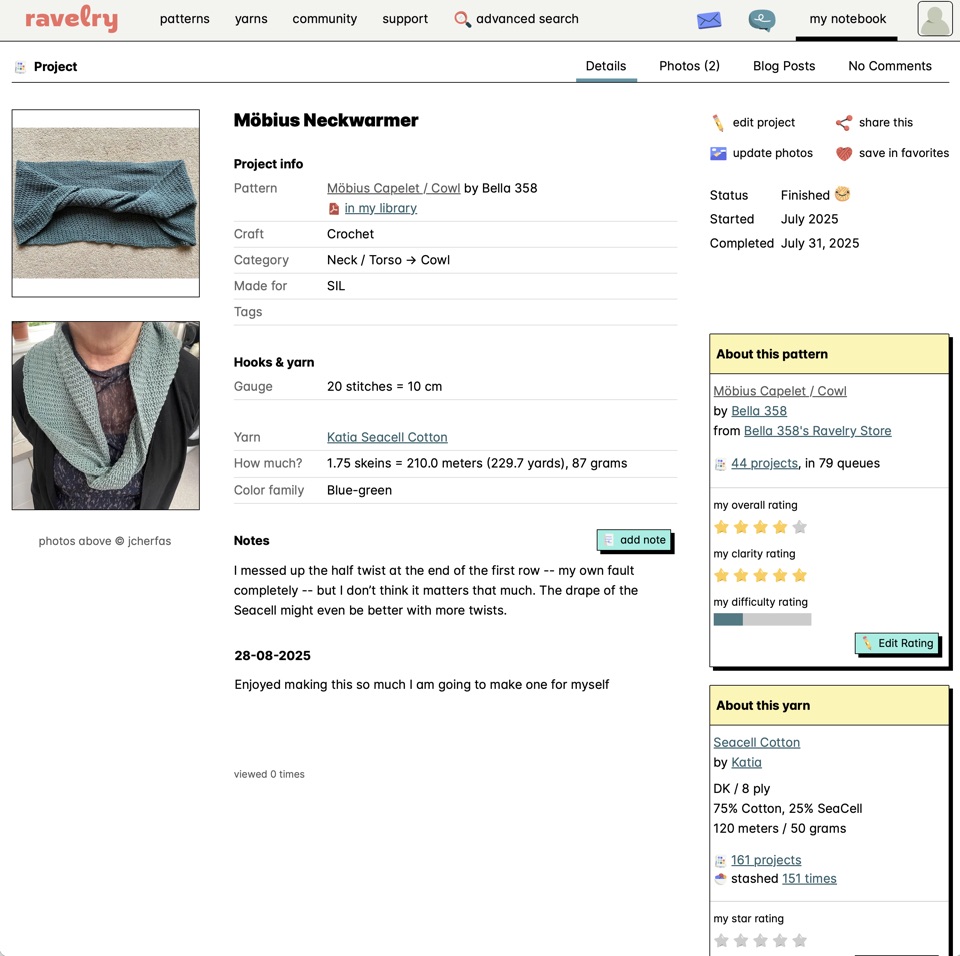Ravelry is an astonishing resource for knitters, crocheters and vairous other fibre crafts. It hosts patterns, advice forums, yarn details and kinda sorta blogs, all co-created (as the cool kids would have it) by the hundreds of thousands of members. I joined earlier this year, when I took up crochet, in search of something more interesting than Granny Squares.
Now, I suppose I might record a couple of completed projects because why not. The thing is, I am wary of all such sites where my contribution exists only with the permission of the site owners. So, even though Ravelry does not strike me as being all about enshittification, it nevertheless seems a good idea to echo things from there to here. Ravelry does have a bunch of RSS options and an API for developers, but for now I think it is going to have to be a modified PASTA

Webmentions
Webmentions
Webmentions allow conversations across the web, based on a web standard. They are a powerful building block for the decentralized social web.
If you write something on your own site that links to this post, you can send me a Webmention by putting your post's URL in here:
Comments